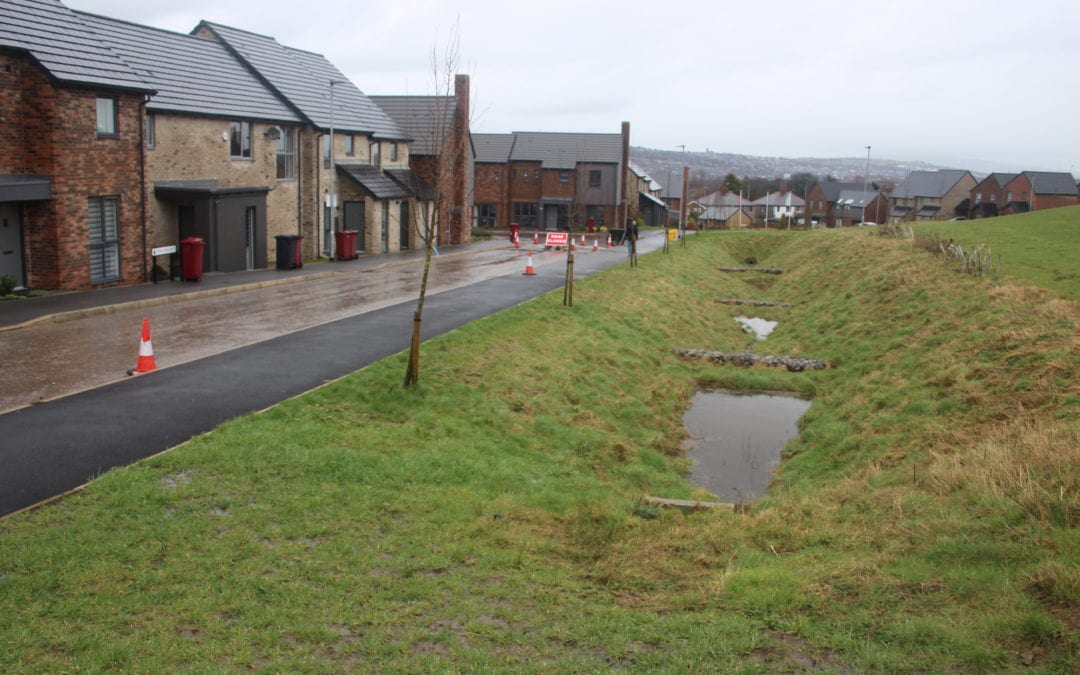At present, water companies and local authorities don’t always look to adopt SuDS (Sustainable Drainage Solutions) like they do with more engineered solutions. Mark Jones, our in-house SuDS specialist, looks at what designers can do to reduce developer concerns about this.
If not adopted by the local water company or council, the long-term maintenance of a SuDS falls to the developer. They often cover these costs through a ground rent or service charge for new homeowners. For the larger developers this is generally accepted but it can put smaller developers off.
We actively encourage SuDS on all the sites we work on, so what can we do to help on smaller residential sites to mitigate these concerns?
The answer is to simplify the approach. If a site has open green space at the right location, then we would look to use a basin. This requires minimal maintenance, specifically grass cutting when dry. It aligns with overall site upkeep at a marginal cost. In contrast, a pond may demand silt clearance and yearly thinning of marginal plants.
If there is no open green space, we always think carefully about the positioning and accessibility of attenuation storage and soakaways, to help keep costs down. We encourage planting schemes that are low maintenance and the use of sympathetic hard landscaping as part of the design.
As SuDS advocates, we welcome the adoption of all schemes by local authorities. However, we’re pragmatic, acknowledging the resource impact. Given the necessity for sustainable water management amid climate changes, we’ll persist in simplifying SuDS for developers to realise financial and environmental benefits in site layouts.
